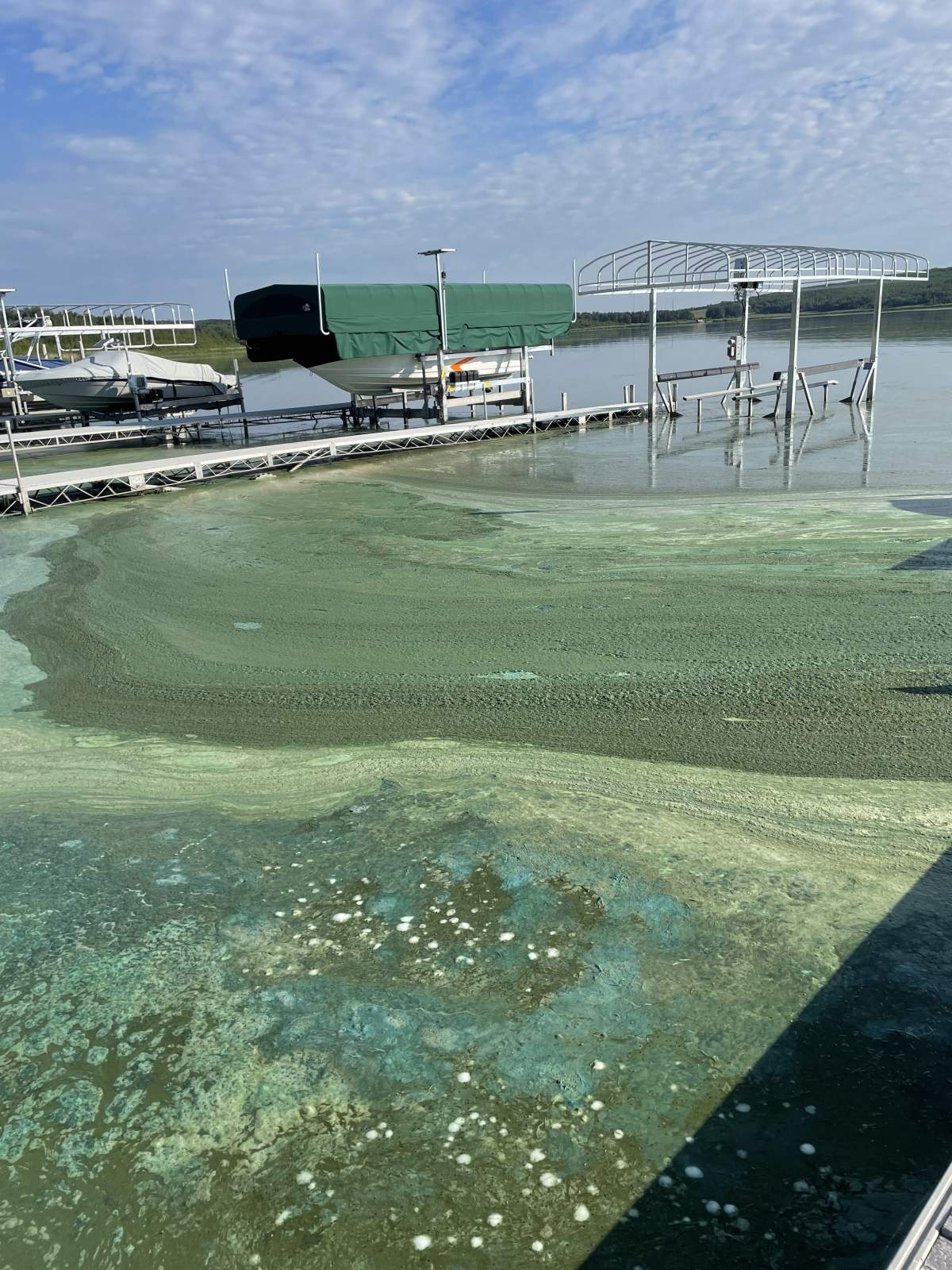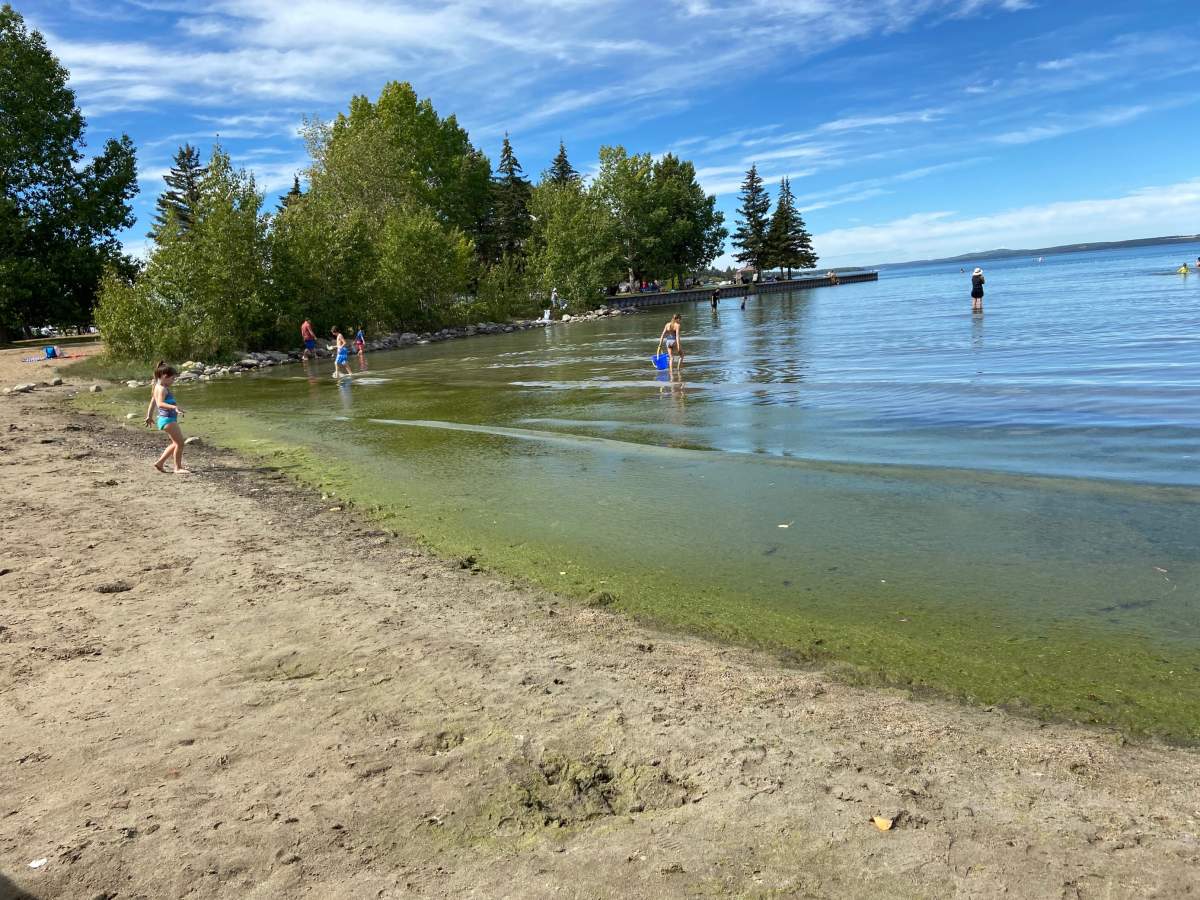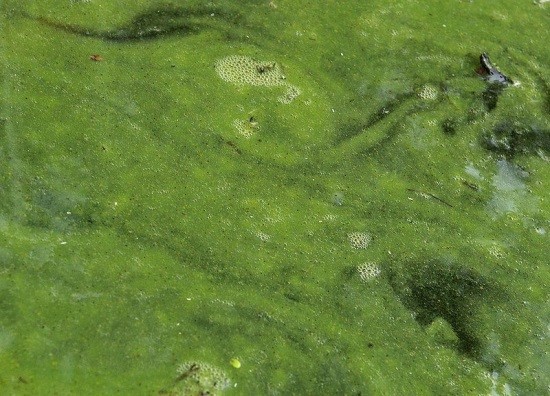Update: This advisory was lifted on Nov. 2, 2023. Previous story below:

Heading into the August long weekend, a health advisory has been issued for a popular body of water west of Edmonton.
On Friday, Alberta Health Services issued a blue-green algae (cyanobacteria) advisory for Wabamun Lake in Parkland County.
Blue-green algae is naturally occurring and often becomes visible when weather conditions are calm.
The blooms are common in Alberta because of the phosphorus-rich soils the region sits on.
Appearing like scum, grass clippings, fuzz or globs on the surface of water, blue-green algae can be blue-green, greenish-brown, brown, and/or pinkish-red, and often smells musty or grassy (scroll down for example photos.)

Weather and wind conditions can cause algae blooms to move around to different parts of the lake so the advisory will remain in effect for Wabamun Lake until further notice, AHS said.
AHS added areas of Wabamun Lake in which the algae is not visible can still be used for recreational purposes, even while the health advisory is in place.

People who come in contact with visible algae blooms or who swallow contaminated water may experience skin irritation, rash, sore throat, sore red eyes, swollen lips, fever, nausea and vomiting and/or diarrhea.

Get breaking National news
Symptoms usually appear within one to three hours and resolve in one to two days. Symptoms in children are often more pronounced; however, all people are at risk.

Residents living near the shores of Wabamun Lake, as well as visitors, are advised to take the following precautions:
- Avoid all contact with cyanobacteria (blue-green algae) blooms. If contact occurs, wash with tap water as soon as possible
- Do not swim or wade or allow your pets to swim or wade in any areas where cyanobacteria is visible
- Do not feed whole fish or fish trimmings from this lake to your pets
- Consider limiting human consumption of whole fish and fish trimmings from this lake, as it is known that fish may store toxins in their liver. (People can safely consume fish fillets from this lake).
As always, AHS said visitors and residents are reminded to never drink or cook with untreated water directly from any recreational body of water, including Wabamun Lake, at any time.
Boiling the water will not remove the toxins produced by blue-green algae, AHS said.
An alternate source of drinking water should also be provided for pets and livestock while the advisory is active.
For a list of all the blue-green algae advisories in Alberta, visit this Alberta Health Services page.




















Comments